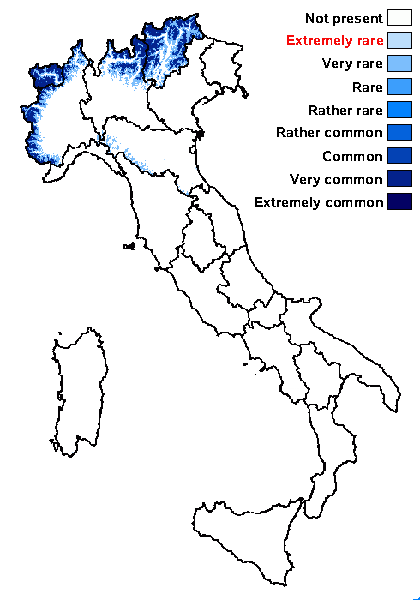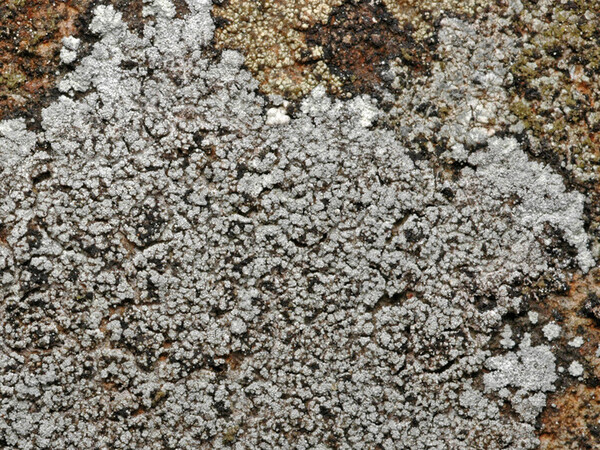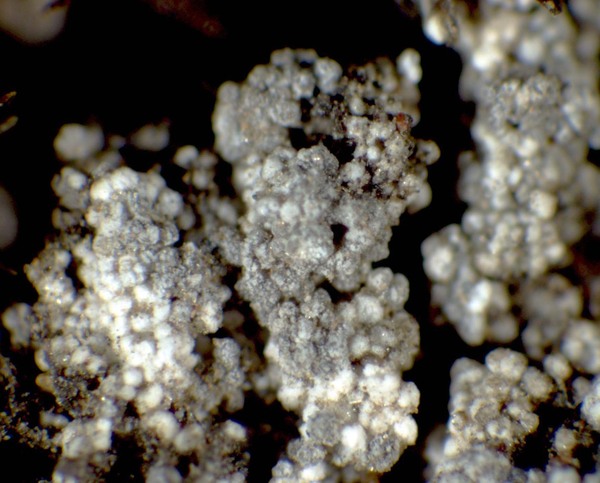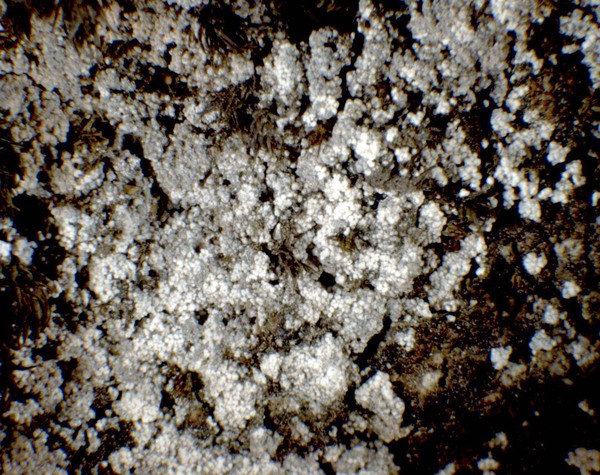Lepraria neglecta (Nyl.) Erichsen
Flechtenfl. Nordwestdeutschl.: 394, 1957. Basionym: Lecidea neglecta Nyl. - Not. Sällsk. Fauna Fl. Fenn. Förh., 4: 233, 1859.
Synonyms: Crocynia neglecta (Nyl.) Hue; Lecidella neglecta (Nyl.) Stein
Distribution: N - TAA (Kümmerling & al. 1993, Nascimbene & al. 2022), Lomb, Piem (Morisi & Sereno 1995, Baruffo & al. 2006, Isocrono & al. 2003b, 2006), VA (Piervittori & Isocrono 1997), Emil (Baruffo & al. 2006, Fariselli & al. 2020).
Description: Thallus crustose to subleprose, whitish to whitish grey, often somehow darker in central parts, usually well-delimited and sometimes obscurely lobed, entirely consisting in a compact mass of convex, rather firmly attached granules. The thallus starts developing as isolated, dispersed granules that form piles, or aggregations (best visible along the margins, where the dispersion of the young granules is most readily observed) which eventually overlap and become confluent, giving the false appearance of a continuous thallus in older areas. Old specimens stain herbarium paper red-brown (alectorialic aicd). Granules 80-150(-200) μm in diam., sometimes grouped into larger, up to 300 μm wide aggregates, pseudocorticate, the surface compact, without projecting hyphae. Medulla greyish white, rarely exposed, the hyphae 2-5 μm thick, covered in places with small, colourless crystals. Photobiont chlorococcoid, the cells up to 17 μm wide. Spot tests: K+ yellow, C- or C+ reddish orange, KC+ reddish orange to orange-pink, P+ lemon yellow, UV-. Chemistry: alectorialic and roccellic/angardianic acids.Note: a mainly arctic-alpine lichen found on moss cushions and stony siliceous ground on surfaces wetted by rain, mostly in snow-beds near or above treeline, reaching the nival belt in the Alps. Earlier records from Sardinia are dubious (Baruffo & al. 2006).
Growth form: Leprose
Substrata: rocks, soil, terricolous mosses, and plant debris
Photobiont: green algae other than Trentepohlia
Reproductive strategy: mainly asexual, by soredia, or soredia-like structures (e.g. blastidia)
Commonnes-rarity: (info)
Alpine belt: very common
Subalpine belt: common
Oromediterranean belt: extremely rare
Montane belt: very rare
Submediterranean belt: absent
Padanian area: absent
Humid submediterranean belt: absent
Humid mediterranean belt: absent
Dry mediterranean belt: absent

Predictive model
Herbarium samples
Growth form: Leprose
Substrata: rocks, soil, terricolous mosses, and plant debris
Photobiont: green algae other than Trentepohlia
Reproductive strategy: mainly asexual, by soredia, or soredia-like structures (e.g. blastidia)
Commonnes-rarity: (info)
Alpine belt: very common
Subalpine belt: common
Oromediterranean belt: extremely rare
Montane belt: very rare
Submediterranean belt: absent
Padanian area: absent
Humid submediterranean belt: absent
Humid mediterranean belt: absent
Dry mediterranean belt: absent

Predictive model
| Herbarium samples |
 INDEX FUNGORUM
INDEX FUNGORUM
 GBIF
GBIF
 DOLICHENS
DOLICHENS





